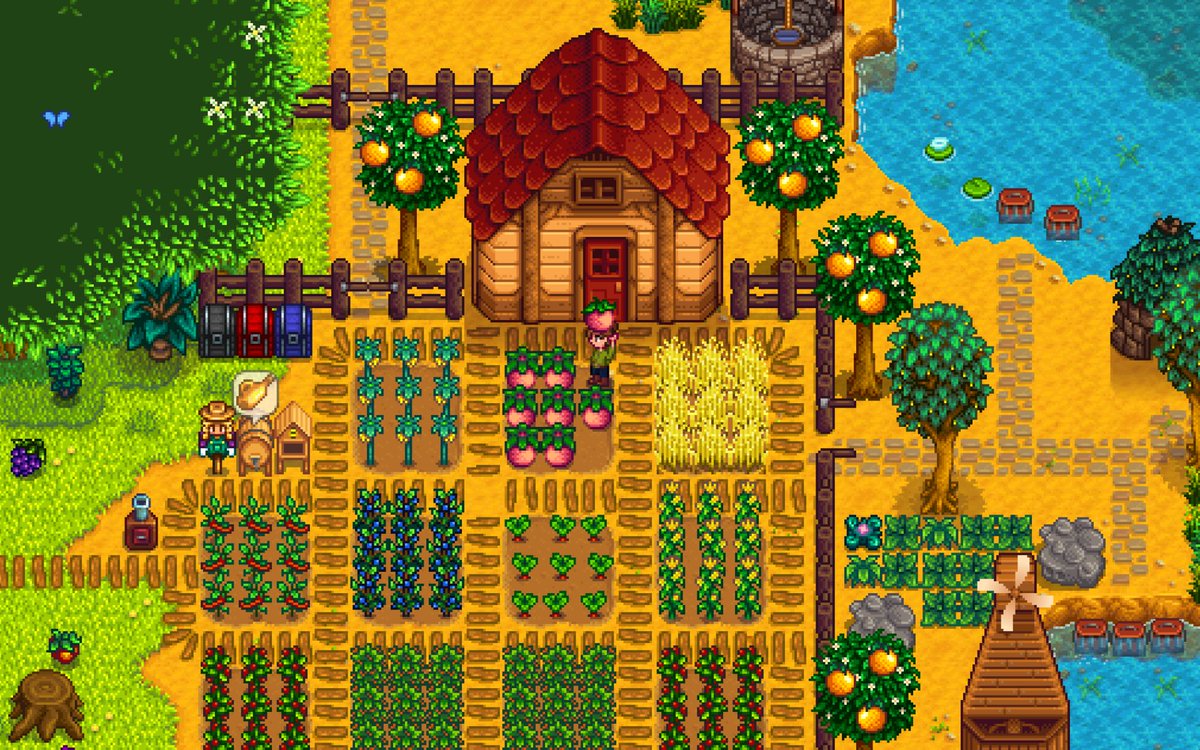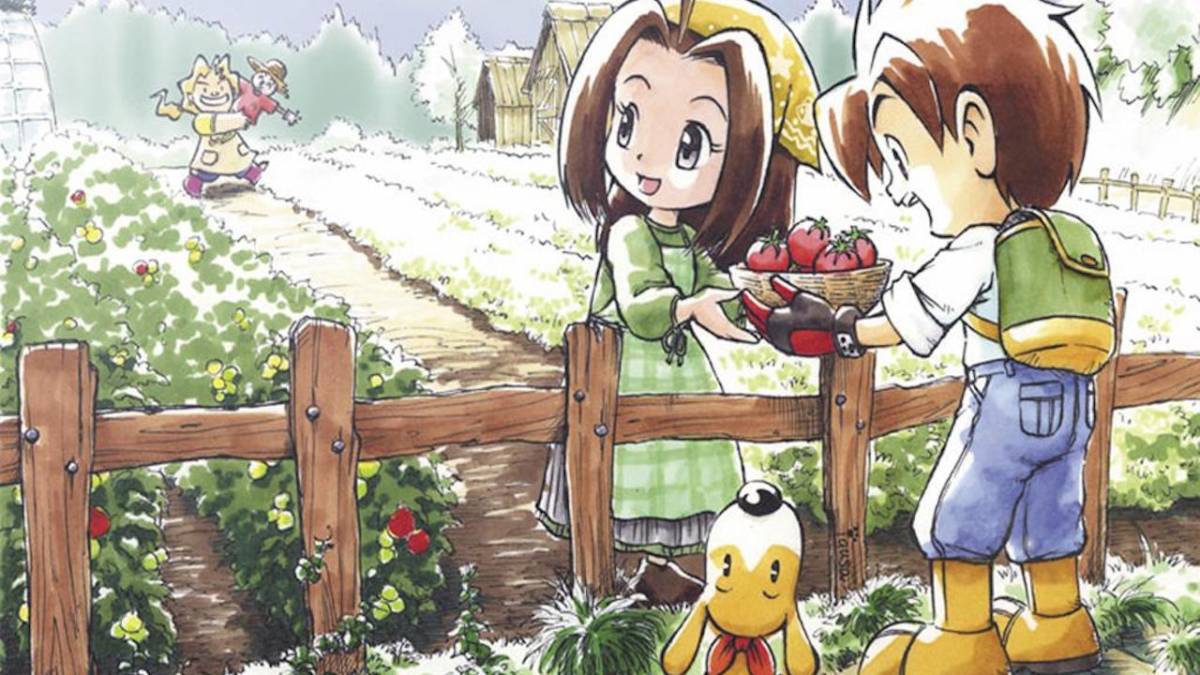Rarely am I bowled over by new releases anymore. Age, past experiences, and commitments have made it harder to sit back and enjoy the latest and greatest. Yet, one game that grabbed my attention recently was Stardew Valley, 2016’s farming sim featuring low poly graphics, 8-bit audio and a simplistic story about life in a valley.
Nothing that hasn’t already been done before, I thought, but my interest was peaked by its quickly growing fanbase. 70 hours later and I was still in love. My flame for the farming life genre rekindled, but all the while I possessed an insatiable yearning to replay Harvest Moon: A Wonderful Life.
Both games are great – make no mistake – but the 2002 Gamecube classic not only has past Harvest Moon titles to build upon but had a large team working it. A Wonderful Life is a polished, well defined product and below are the reasons why it just pips Stardew Valley.
Aging

While Stardew does a lot right, after about 20 hours it slowly loses steam as dialogue and character actions begin to repeat. The use of four seasons, a 24-hour clock and year tracking make it rewarding as you know how long to wait for crops, when someone’s birthday will be, and the exact date town events will occur, but it is also foregrounds that very little changes in the valley. With each passing year, while you might become more proficient at cultivating crops, the town’s citizens remain more-or-less unchanged, repeating the same dialogue year after year. Not growing older or changing in any way.
This can be frustrating in a life sim as it makes the inhabitants feel like robots that only come to life when you have interacted with them. Harvest Moon games also suffer from eventual repetitiveness but to a far lesser extent as dialogue trees are more fleshed out in both the earlier and later parts of the game.
In A Wonderful Life, characters will grow, change and die at various points during the game. Even though this is sad, it humanises them. Characters who you will become attached to earlier on may unexpectedly pass away and it is heartbreaking to watch those who knew them adapt.
Characters

During my first playthrough of Stardew Valley, I was enamoured with the in-game video sequences that played once preset friendship levels had been reached (two, four, six, eight and ten hearts). They were cute, funny and playful moments, highlighting the blossoming connection between you and other characters.
Stardew knew how to tug at the heartstrings and some of my favourite moments involve characters who either feel rejected or ostracised. It broke my heart to see Linus, the local homeless man who raids bins when no one is around, stand in corners during town events as he doesn’t want to annoy anyone. Unfortunately, while moments like this make Stardew Valley a rich and rewarding experience, they only occur a couple of times for each character.
The lack of dialogue becomes progressively more apparent as you reach the later part of the game. For example, if you get married, your partner will rarely interact with anyone or do anything productive. It is particularly mortifying to watch Maru, a talented individual who spent all her time building gadgets and working at the local clinic, become someone who spends her married life standing idly around a house.
Harvest Moon, on the other hand, never suffers from the same lack of dialogue. In fact, a lot of the payoff from the interactions and choices you have made come in to fruition later on. One of most enjoyable things about A Wonderful Life is seeing your child grow up and start independently interacting with people around the town.
Equally, many of the town’s citizens are bizarre. Some of the inhabitants include archaeologists, mad scientist, artists, a salaryman, and a pyrotechnician. It is a weird mix, but one that keeps the farm life narrative quirky and engaging.
Visuals

Maybe more than anything else, I love Harvest Moon’s visual flair. Each and every inhabitant comes to life as their large, exaggerated facial expressions and emphatic gesturing immediately indicates what they are feeling. This artistic style is particularly satisfying in a genre where a lot of the pay offs come from interaction.
The design of the town is equally as effective. One minute you’ll be surrounded by twinkly lights in a fairy forest, the next greeted by a smiley cow or a field of sakura trees. The game always conveyed the dreamy idea of moving to a faraway place with such accuracy that it was easy to feel immersed in the world.
This isn’t to say Stardew doesn’t have its own unique charm, it’s just not as effective as Harvest Moon. I love the colourful, simplistic 16-bit style graphics of Stardew Valley, but I sometimes wished that there was a way to get more feedback from the characters beyond the simple animated portraits and low poly graphics.
A real ending

While Stardew does have a conclusion of sorts when you complete the longer, over-arching set of quests, little changes if you complete it. This gives Stardew an unsatisfying conclusion as the player can either chose to end the game once the quest has finished, or continue knowing that the inhabitants will not acknowledge these previous events.
In Harvest Moon, there are multiple potential end points. If you chose not to marry after the first year, game over. Or, if you have lived a full life, death will eventually be waiting for you. This may seem annoying, but it gives a sense of urgency and finality that wraps up the farming life story.
Ultimately, the main takeaway from this is that if you love farming sims, you should play both. Even though it is likely that I will always prefer A Wonderful Life, both are a lot of fun and deserved to be played. Stardew Valley’s creator, Eric Barone, has achieved something incredible by creating most of this game by himself, and whether it be through future updates or a sequel, I have no doubt that Stardew – much like the crops – will continue to grow.
If, like a farmer working out his crops for the year, you want to look to the future, check out our list for the 56 Biggest Upcoming Games of 2018 and Beyond.
Some of the coverage you find on Cultured Vultures contains affiliate links, which provide us with small commissions based on purchases made from visiting our site.



